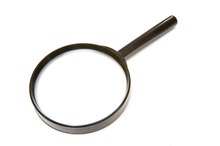Normal Endometrial Stripe Thickness
The inner lining of the uterus is called the endometrium. The endometrium is the tissue to which a fertilized egg, or blastocycst, attaches for the duration of a pregnancy. The endometrial size varies throughout the menstrual cycle, but should be less than 8 mm in post-menopausal women.
Menstrual Cycle
The menstrual cycle lasts approximately one month. During the cycle, a follicle matures and then it ruptures to release an egg that is swept into the fallopian tube for fertilization. The endometrium thickens throughout the menstrual cycle in preparation for egg implantation. If implantation does not occur, the endometrium is expelled, a process called menstruation.
- The menstrual cycle lasts approximately one month.
- During the cycle, a follicle matures and then it ruptures to release an egg that is swept into the fallopian tube for fertilization.
Menstruation
How Big Is My Unborn Baby at 18 Weeks?
Learn More
The endometrium starts off as a thickened lining, sometimes measuring up to 15 mm in thickness. Menstruation occurs during the first week of the menstrual cycle. As the endometrium is expelled, it may vary in thickness and may have an irregular appearance on ultrasound. As the week progresses, the endometrium becomes thinner. By then end of menstruation, the endometrium should measure approximately 2 to 3 mm thick.
- The endometrium starts off as a thickened lining, sometimes measuring up to 15 mm in thickness.
- By then end of menstruation, the endometrium should measure approximately 2 to 3 mm thick.
Proliferative Phase
During the proliferative phase, a follicle begins to grow on one of the ovaries. While this follicle grows, it secretes estradiol, an estrogen that is responsible for the thickening of the endometrium prior to ovulation. Fertility increases during this stage of the cycle. During the proliferative stage, the endometrium can become as much as 8 mm thick. On ultrasound, it has the appearance of three lines 1.
- During the proliferative phase, a follicle begins to grow on one of the ovaries.
- During the proliferative stage, the endometrium can become as much as 8 mm thick.
Ovulation
Brown Spotting After Menopause
Learn More
Ovulation marks the end of the proliferative phase and the beginning of the secretory phase. The mature follicle ruptures and releases an egg, called an ovum. This is called ovulation. Fertility is greatest between five days prior to ovulation and two days after. Some fertility clinics like to see a 1-cm thick endometrium prior to ovulation.
- Ovulation marks the end of the proliferative phase and the beginning of the secretory phase.
- Some fertility clinics like to see a 1-cm thick endometrium prior to ovulation.
Secretory Phase
The follicle that ruptured to release the egg is now called the corpus luteum. The corpus luteum releases progesterone. Progesterone is responsible for the further thickening of the endometrium in preparation for blastocycst implantation. During the secretory phase, the endometrium can thicken to as much as 15 mm.
- The follicle that ruptured to release the egg is now called the corpus luteum.
- Progesterone is responsible for the further thickening of the endometrium in preparation for blastocycst implantation.
Related Articles
References
- Ultrasound: The Requisites (Requisites); Alfred B. Kurtz William D. Middleton; 1996
- Nalaboff KM, Pellerito JS, Ben-levi E. Imaging the endometrium: Disease and normal variants. Radiographics. 2001;21(6):1409-24. doi:10.1148/radiographics.21.6.g01nv211409
- Yale Medicine. Uterus histology.
- Lumen Learning. Uterus and cervix.
- UpToDate. Patient education: Abnormal uterine bleeding (beyond the basics). Updated January 14, 2019.
- U.S. Department of Health and Human Services Office on Women's Health. Endometriosis. Updated April 1, 2019.
- RESOLVE. Endometriosis.
- American College of Obstetricians and Gynecologists. Endometrial hyperplasia. Updated February 2012.
- Onstad MA, Schmandt RE, Lu KH. Addressing the role of obesity in endometrial cancer risk, prevention, and treatment. J Clin Oncol. 2016;34(35):4225-4230. doi:10.1200/JCO.2016.69.4638
- UpToDate. Management of endometrial hyperplasia. Updated November 8, 2019.
- American Cancer Society. Signs and symptoms of endometrial cancer. Updated March 27, 2019.
- American Cancer Society. Endometrial cancer survival rates, by stage. Updated March 27, 2019.
Writer Bio
Diane Ursu has an associate's degree in diagnostic medical sonography and worked as a sonographer for five years. She is also a mountain biking advocate and has sat on the board of directors for multiple non-profit organizations.







